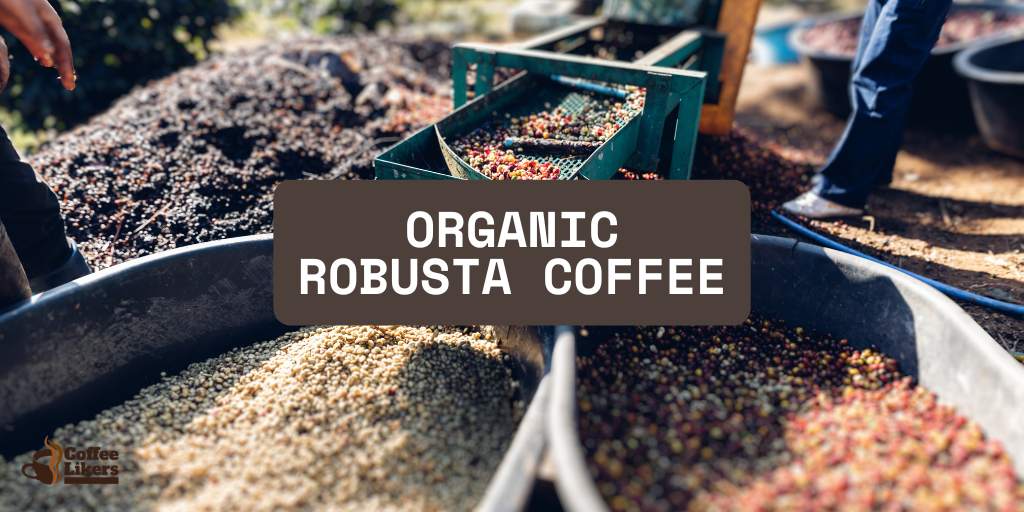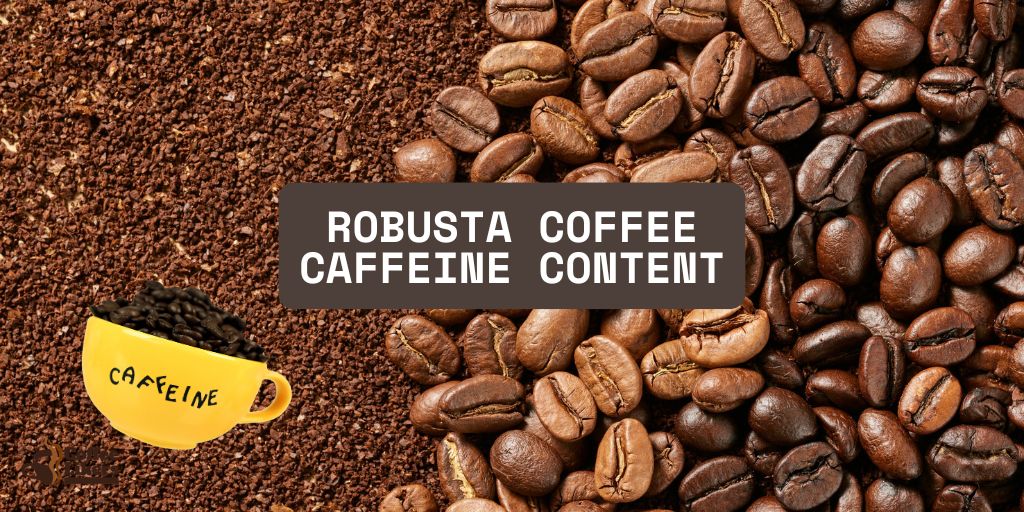Cuban coffee is very important in Cuba. It is not just a drink, but it also represents tradition, community, and the lively lifestyle of the island.
Whether you make it at home with a traditional moka pot or enjoy it at a busy ventanita, each cup tells a story of Cuban heritage.
Cuban coffee has a unique flavor with a strong taste and a frothy layer on top, made by mixing sugar vigorously with the first drops of espresso. This special way of preparing the coffee adds to its charm and authenticity.
Every sip of Cuban coffee, from the famous café Cubano to the comforting café con leche, takes you on a journey through your senses to the busy streets of Havana.
The long history and social importance of this drink make it more than just a daily treat; it is a cultural experience that captures the heart of Cuban identity and hospitality.
Here, in this blog, we are going to look at the variations of Cuban coffee and many interesting fun facts about it.
What are the different types of Cuban coffee and how do they differ from each other? Cuban coffee is sweet and has a strong flavor. Many people like to use brands like Cafe Bustelo and Cafe La Llave to make a strong espresso in an espresso maker. Café Cubano, Cortadito, Café con Leche, and Colada are a few of the most well-liked varieties of Cuban coffee.
Variations Of Cuban Coffee: Brief Description
Cuban coffee has different types, all delicious and catering to different tastes. They all start with a strong, dark espresso made in a moka pot.
A colada is a large serving of espresso meant for sharing. Cortadito is espresso with a little steamed milk added.
Café con leche is espresso with more steamed milk for a milder flavor. Each type keeps the bold flavors of Cuban coffee while adding its special touch.
Cuban Coffee Recipes
The way to make Cuban coffee is very simple. You just need a few things: finely ground coffee, sugar, and water. You can use a moka pot or other espresso makers to brew it.
First, pour water into the bottom of your espresso maker. Next, fill the filter with coffee grinds. The water will pass through the coffee as it heats up, making a strong espresso shot.
The key to real Cuban coffee is the “espumita.” This is a sweet foam made by mixing a little hot espresso with sugar. Mix this foam into the rest of the espresso for a delicious and rich coffee.
Cuban Coffee Variations
While the classic café Cubano is the most popular, there are many tasty versions to enjoy. If you want something milder, “café con leche” is a good choice.
This drink mixes espresso with steamed milk. Another option is “cortadito,” which means “cut.” It is a smaller drink with espresso and a bit of steamed milk.
Another favorite is the “colada.” This drink is bigger and meant to be shared with others. It is usually served in a styrofoam cup along with small plastic cups.
This shows how coffee brings people together in Cuban culture. Sharing coffee with friends and family is a lovely part of their way of life.
When picking coffee for a Cuban coffee experience, some brands are well-known. The names “Café La Llave” and “Café Bustelo” are well-known. They provide strong flavors and use traditional roasting methods.
Cuban Coffee Preparations
The “espumita” technique is very important for making real Cuban coffee. It changes regular sugar into a rich, creamy foam. To do this, start with one or two spoons of sugar in a small cup or pitcher.
While your espresso brews, catch the first drops. These drops are the richest part. Slowly drizzle them over the sugar.
Now take a spoon and whisk the coffee and sugar hard until you get a thick, light paste. This is your base for the espumita. Keep whisking as you add a few more drops of espresso. Air will be added to the mixture as a result.
Once your espresso is fully brewed, gently pour it into the cup with the sugar paste. Stir it gently to mix, but be careful not to break the espumita. Serve your Cuban coffee right away in small espresso cups, called “tazas de café.” Enjoy the strong smell and bold flavor.
Traditional Cuban Beverages
Cuban food has many tasty drinks, but none are as well-known as Cuban coffee. It is made with finely ground dark-roast beans, usually from popular brands like “Café La Llave.”
Cuban coffee is famous for its strong taste and special “espumita,” a creamy foam created by combining the initial droplets of brewed espresso with sugar.
Some popular traditional Cuban drinks include:
- Café Cubano: This is the typical Cuban coffee, known for its strong flavor and sweet espumita.
- Cortadito: A small, strong version of café con leche, which mixes espresso with a little steamed milk.
- Café Con Leche: Similar to a latte, café con leche combines espresso and steamed milk for a smoother taste.
These types of coffee are often enjoyed with Cuban pastries like “pastelitos de guayaba” (guava pastries). They hold significance in Cuban culture and are enjoyed throughout the day, from morning until after dinner.

Overview Of Café Cubano: The Traditional Cuban Espresso Shot
Café Cubano is not just a coffee drink. Variations of Cuban coffee are a part of Cuban culture and a daily ritual for many people.
This powerful espresso beverage has a frothy top and is sweet. It offers a flavor that wakes up the senses and shows the lively spirit of Cuban life.
To make café cubano, finely ground dark-roasted coffee is used. It is brewed with a stovetop espresso maker called a “cafetera.” The creaminess and sweetness come from “espumita.”
This caramel-colored foam is made by mixing sugar with the first strong drops of brewed espresso. It creates a rich layer on top of the coffee.
The Cultural Significance Of Coffee In Cuban Society
In Cuba, coffee is very important. It’s not just a drink; it’s a big part of daily life. People connect and share moments with it.
Whether it’s having coffee in the morning with family or chatting over coffee at local cafes, coffee brings people together and creates strong community bonds.
This importance extends beyond Cuba to Cuban communities around the world. Gathering for coffee, whether at home or in cafes, is essential for preserving cultural identity. It helps pass down traditions and share stories over a strong, sweet cup of coffee.
The Process Of Making A Perfect Café Cubano
Creating a delicious café Cubano is like a form of art. It requires careful steps and attention. Begin by selecting finely ground dark-roasted coffee.
This type of coffee is known for its strong flavor and aroma. Use a stovetop espresso maker, also known as a “cafetera.” Fill the bottom chamber with water and place the coffee grounds in the filter basket.
The most crucial step is making the “espumita.” While the espresso is brewing, collect the initial few drops in a separate cup with a spoonful of sugar.
Whisk it until it becomes a thick, frothy paste. This adds air for a creamy texture. Once the espresso is fully brewed, gently mix it with the sugar paste. This results in a perfectly balanced café cubano.
What Sets Cuban Coffee Apart From Other Coffee Varieties?
Cuban coffee is distinct from other varieties. variations of Cuban coffee are special because of how it is made, its strong taste, and its sweet flavor.
It is usually made with a stovetop espresso maker, also called a “cafetera.” This method uses pressure to bring out the best flavor from dark-roasted, finely ground coffee beans.
One big thing that makes it unique is the “espumita.” This is a creamy, caramel-colored foam on top of the coffee. It is made by mixing sugar with the first drops of brewed espresso.
You don’t see this kind of foam in other coffee traditions. The espumita adds sweetness and texture. It helps balance the strong flavor of the coffee, giving you a great experience.
Café Cubano: An Intense And Sweet Espresso Shot
Café Cubano is not just any coffee shot. It is a strong and sweet drink that represents the lively Cuban culture. Made with dark-roasted coffee and brewed in a stovetop espresso maker, this drink gives you a good caffeine boost to start your day.
What makes Café Cubano unique is the “espumita,” a creamy foam on top of the coffee. You can get this foam by mixing sugar with the first drops of brewed espresso.
This adds a nice sweetness and texture that complements the strong coffee flavor. The combination of bold taste and sweet foam is what makes Café Cubano so special and irresistible.

Cortadito: The Sweet And Creamy Cousin Of Café Cubano
The cortadito is a popular type of café cubano that means “cut” in Spanish. It has a milder coffee taste but is still delicious. This drink is made by mixing strong Cuban espresso with a little steamed milk, giving it a creamy and sweet flavor.
Many people enjoy this Cuban coffee because it has the bold taste of café cubano with added creaminess.
Its small size makes it perfect for a quick energy boost, and its rich flavor and creamy texture will make you happy.
Ingredients And Preparation Of Cortadito
To make a nice cortadito, you need a few key ingredients: finely ground dark-roast espresso, sugar, and milk. Start by brewing a shot of espresso. You can use a stovetop espresso maker or an electric espresso machine for this.
While your espresso is brewing, make the “espumita.” In a small metal pitcher, mix a tablespoon of sugar with the first few drops of your brewed espresso.
Whisk it thoroughly until you get a thick, light paste. This foamy sweet mixture is the main part of the cortadito.
When your espresso is done, pour it into the pitcher with the espumita. Add a splash of steamed milk. You can adjust the amount to what you like.
Stir gently to mix everything. Serve your cortadito right away in a small glass or espresso cup, and enjoy the rich flavor of this Cuban drink.
Café Con Leche: The Cuban Twist On Coffee With Milk
This phrase translates to “coffee with milk.” It is a common beverage in Cuban households and a pleasant way to begin the day. This drink is softer than café cubano. It mixes strong Cuban espresso with lots of steamed milk for a smoother taste.
Making café con leche is easy, but it focuses on using good ingredients. People usually have it for breakfast. It goes well with buttered Cuban toast. This combination of flavors and textures shows what a Cuban breakfast is all about.
How To Make A Delicious Café Con Leche At Home?
Making a tasty café con leche at home is easy. You can bring the flavors of Cuba to your kitchen. First, make a strong cup of coffee using any method you like. Cuban coffee usually uses dark-roast espresso, but you can use medium roast if you want a milder taste.
Next, put equal parts water and milk in a small pot over medium heat. The water helps stop the milk from burning and makes it smoother.
While the milk is heating, add a teaspoon of brown sugar for each serving to your coffee mug and stir until it dissolves.
When the milk is hot and a bit frothy, pour it into your mug. Stir gently to mix it with the coffee. If you want your café con leche sweeter, add more brown sugar. Serve it right away and enjoy this comforting Cuban classic.
Exploring Other Popular Variations Of Cuban Coffee
Aside from the usual types of Cuban coffee like café cubano, cortadito, and café con leche, there are more tasty options to try.
If you like sweet drinks, you should try the “café bombón.” It’s a yummy mix of espresso and sweetened condensed milk that makes a creamy and sweet treat.
Another favorite is the “colada.” It’s a bigger version of café cubano that is meant for sharing. It usually comes in a styrofoam cup with small plastic cups on the side.
The colada shows the friendly culture of Cuba, where coffee is enjoyed with loved ones.

Discover The Rich Tradition Of Cuban Coffee
Cuban coffee is more than just a drink. A significant aspect of Cuban culture is the variety of Cuban coffee. People love to drink it at busy coffee windows where they can get lots of small cups of coffee.
It is also popular at family gatherings where everyone shares big cups of coffee. Coffee brings people together and makes social events more lively.
Cuban coffee has strong flavors that are sweet and creamy. This shows how much Cubans love life.
You can drink it for a quick energy boost or sip it slowly while talking with friends and family. Cuban coffee gives us a taste of a heritage that is full of warmth, connections, and happiness in simple moments.
Traditional Accompaniments To Cuban Coffee Like Pastelitos Or Tostada
No Cuban coffee experience is complete without some tasty snacks. Traditional Cuban pastries have a mix of flavors and textures that make the coffee taste even better.
A common dessert is “guava pastries.” Sweet guava paste fills these flaky cakes. The sourness of the guava goes well with the sweet coffee, creating a delicious combination.
Another favorite option is “toasted bread.” This is Cuban bread toasted and lightly buttered, often dipped in coffee.
The crispy bread and buttery taste complement the strong coffee well. It also absorbs the coffee nicely, blending the flavors.
Here are some other traditional snacks to enjoy with your Cuban coffee:
- Cuban Fritters: Tasty fried snacks with fillings like ham, chicken, or beef. They provide a nice contrast to the sweet coffee.
- Empanadas: Half-moon pastries filled with various savory or sweet fillings. They are a delightful addition.
- Churros: Deep-fried pastries with sugar coating. Sometimes served with chocolate sauce for dipping—a special treat for celebrations.
Where To Experience Authentic Cuban Coffee Culture
To truly experience Cuban coffee culture, you should do more than just order a “cafecito.” You should immerse yourself in the lively atmosphere of Cuban cafes, known as “ventanitas.” These spots are where locals gather to chat, tell stories, and enjoy their coffee.
These bustling spots are often found on street corners or as small windows in restaurants. They are the heart of Cuban coffee culture.
The smell of freshly brewed coffee, the sound of cups clinking, and the sound of people talking create a vibrant experience that transports you to Havana.
Where To Find Authentic Cuban Coffee Experiences?
For a real taste of Cuban coffee culture, go to cities with lots of Cuban people. Miami, Florida is called the “Capital of Latin America.” It has many Cuban places called “ventanitas” and restaurants, especially in Little Havana.
Other cities in South Florida, like Fort Lauderdale and West Palm Beach, have authentic Cuban coffee too. Here, you can enjoy strong, sweet flavors with traditional pastries like “pastelitos de guayaba” and “tostada.”
Cities outside Florida, like Los Angeles, New York, and Chicago, have more Latino people now. These cities are also getting more Cuban cafes and restaurants.
Exploring these places is a fun adventure. You can walk around different neighborhoods and find the diverse food scene in your city.
Tips For Enjoying Cuban Coffee Like A True Local
To really enjoy Cuban coffee, don’t use take-out cups. Join in the special way of having this drink. Ask for a “cafecito” or “un cortadito, please.” Then, take your time to enjoy it, either standing by the counter or sitting outside to watch people go by.
Chat with locals and share stories. Savor the friendly ambiance that distinguishes Cuban coffee culture. Remember, it’s not just about the coffee.
It’s about the whole experience—the connections, the conversations, and the feeling of being part of a community that loves strong, sweet coffee.
Pairing Suggestions With Different Types Of Cuban Coffee
Cuban coffee has diverse flavors for a better tasting experience. Sweet café cubano pairs well with “pastelitos de guayaba.” The guava complements the coffee’s sweetness, creating a delightful blend.
Cortadito includes steamed milk, perfect with denser pastries like guava and cheese pastelitos. The creamy texture matches the milk, offering a mix of sweet and savory flavors in every sip.
For a lighter option, pair cortadito with toasted Cuban bread lightly buttered and sprinkled with sugar.
Celebrating The Cultural Heritage And Traditions Behind Cuban Coffee
Cuban coffee is more than just a drink. It represents the rich culture that has been passed down through the years.
This coffee is part of a tradition that shows the strength of the Cuban people. It also shows the strong community ties that are important in their everyday lives.
Each sip captures the essence of Cuba. You can feel the warmth and energy, along with a strong sense of togetherness.
By enjoying the customs, flavors, and social times around Cuban coffee, we connect to a lively culture that goes beyond borders and links us to a deep history of Cuban coffee.

FAQ About Variations Of Cuban Coffee
What Are The Different Types Of Cuban Coffees?
Some different kinds of Cuban coffee are:
- Cafecito: this is the classic Cuban coffee.
- Colada: this is a bigger serving of cafecito.
- Cortadito: this is a shot of Cuban espresso with some steamed milk.
- Café con leche: this is a larger version of cortadito.
All these make strong coffee and can vary in sweetness and milk.
What Is The Difference Between A Cortadito And A Cuban Coffee?
Cortadito and Cuban coffee both use espresso and have a layer of foam called “espumita.” The difference is that cortadito has a little steamed milk added. On the other hand, Cuban coffee is just a straight espresso shot.
What Are Other Names For Cuban Coffee?
In Miami, “cafecito” or “cubano,” or Cuban coffee, is a popular beverage. It is famous for its “espumita.” This is a sweet and foamy layer made from sugar mixed with the first few drops of brewed espresso.
What’s The Difference Between A Colada And A Café Con Leche?
Colada is a bigger serving of café cubano. It usually comes in a styrofoam cup. You get small espresso cups for sharing. It is strong and sweet. On the other hand, café con leche is made by mixing espresso with steamed milk and sugar.
Final Thought
It can be said that variations of Cuban coffee can be a fun way to learn about Cuban culture and enjoy the special flavors of Cuban coffee. Using a stovetop moka pot.
You can make flavorful coffee and learn how to create the frothy “espumita” that gives Cuban coffee its unique taste.
Whether you love coffee or are new to Cuban coffee traditions, these recipes provide a great way to explore the vibrant coffee culture of Cuba from the comfort of your own home.





Leave a Reply